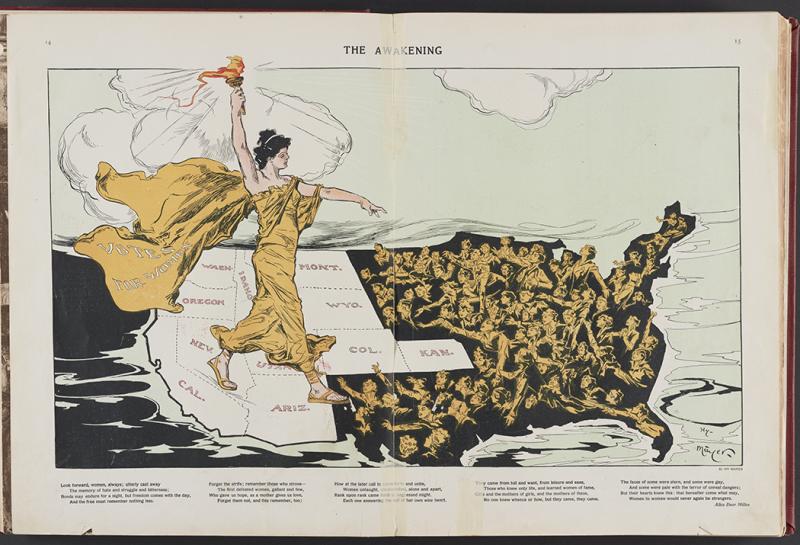Celebrating the Role of the Arts in the Suffrage Movement

Henry Mayer’s The Awakening, featured in the Arts Endowment’s publication, Creativity and Persistence: Art that Fueled the Fight for Women’s Suffrage.
Although the 19th amendment wasn’t officially certified until August 26, August 18 was the date in 1920 when Tennessee became the last state to ratify the amendment, paving the way for women’s suffrage to become the law of the land.
But reaching this milestone took decades of advocacy, activism—and art. Throughout the suffrage movement, the arts helped shift public opinion and rally support, and they also gave women new tools to make their message heard.
The National Endowment for the Arts is celebrating the role of the arts in achieving this important milestone in a couple of ways. First, we commissioned a new book—Creativity and Persistence: Art That Fueled the Fight for Women’s Suffrage—that looks at how poetry, editorial cartoons, music, illustrations, and other types of artwork not only helped define new roles for women outside of the domestic sphere, but also advocated for their inclusion in all aspects of American society, including politics. Featuring 117 illustrations, the book looks at the power of the arts to inspire, inform, and spur innovation. You can download it in PDF or audiobook form (read by Julia Whelan) here.
We also marked this turning point in American history by including in our recent grant guidelines a call for projects that focused on and/or were inspired by the suffrage movement and the passage of the 19th amendment. A special issue of American Artscape magazine focuses on some of these Arts-Endowment supported projects, including a new play commissioned by StageOne Family Theatre to help young people learn about the suffrage movement and why it still matters today; an international partnership project to reimagine Scott Joplin’s ragtime opera Treemonisha, which highlights the role of Black women as leaders both onstage and behind the scenes; and Bard College’s Athena Film Festival, which not only supports the work of women filmmakers but also works to address the gender disparities in filmmaking as a whole.
While we realize that the 19th Amendment did not equally empower all American women and that, in fact, the fight continued for decades, particularly for women of color, we also appreciate that the new law marked an important beginning for women in terms of making their voices heard. Even as the suffrage movement built on the temperance and abolitionist movements, the civil rights movement and many of today’s social movements have built on the successes and lessons learned from the suffrage movement.
We celebrate the fact that the arts are a continuing link in these movements, whether it was the suffragettes repurposing images from classical mythology or rewriting the lyrics to the “Battle Hymn of the Republic,” or the use of songs like “We Shall Overcome” and “Lift Ev’ry Voice and Sing” to motivate participants in the Civil Rights Movement. As we have seen time and time again, and as the art work inspired by the suffrage movement proved, the arts have the power to change not just our hearts, but our communities and our world.




